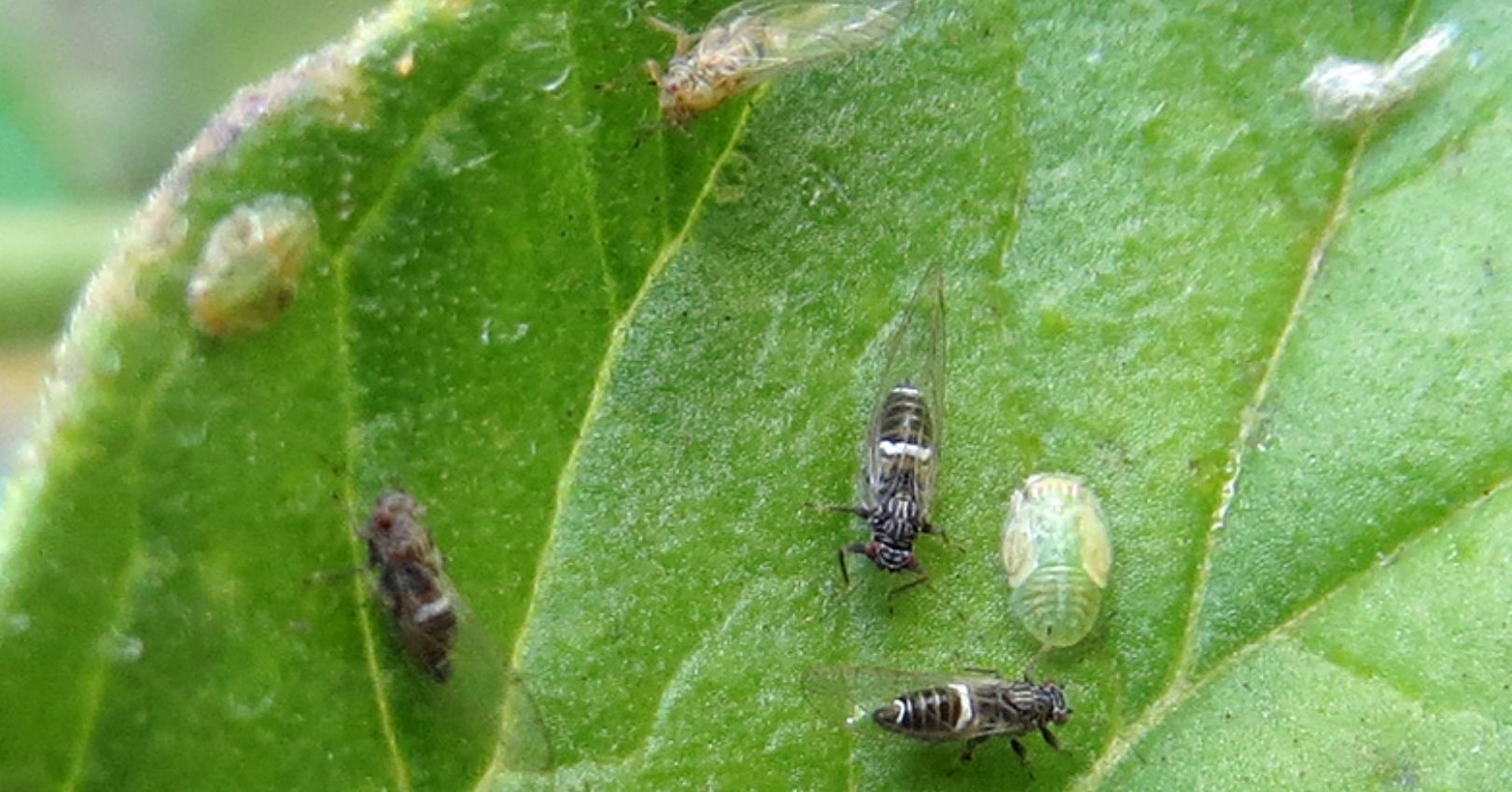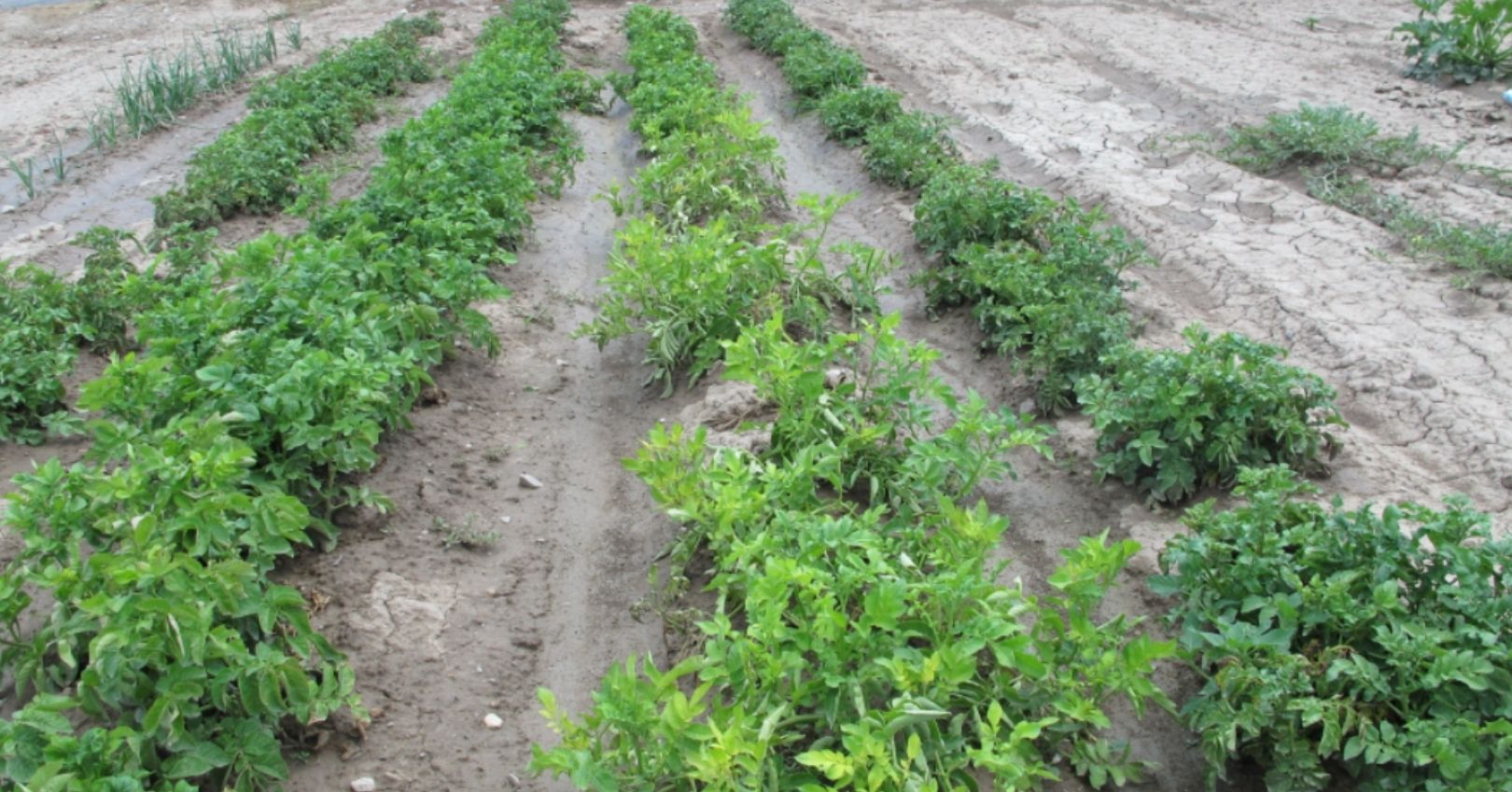Potato Psyllid


Description
Adult: Less than 1/8 inch long with clear wings that rest like a tent over the body. Related to aphids and leafhoppers, and resemble small cicadas. Black in color with white markings and a white inverted “V” on the back. Readily jump when disturbed.
Egg: Extremely small (just larger than potato leaf hairs), foot-ball shaped eggs are orange to yellow in color, supported individually by a short stalk, and laid in the upper canopy of plants on the undersides and edges of leaves.
Nymph: Flat, green (yellowish green to orange when newly hatched), red eyes, and an oval-shaped body with spines around the edge. Nymphs resemble immature soft scale insects or whiteflies but differ in that they readily move when disturbed.
Life History
Potato psyllids do not overwinter in northern Utah; they migrate north on air currents from warmer areas. Psyllid population dynamics and dispersal are greatly dependent on temperatures. Movement and dispersal increases at or above 92°F.
In the Pacific Northwest, potato psyllids are typically first detected in early July, although it is possible they may colonize potato fields around mid-June (possibly later in Utah). Each female lays about 200 eggs that hatch in 6 to 10 days. Early hatching will occur with warmer temperatures; however, temperatures above 90°F reduce reproduction and survival. Nymphs complete five instars (molts) in 13-24 days. Under optimal conditions, potato psyllids can complete a generation in less than a month. Multiple generations occur each season, depending on temperatures and when the psyllids arrive. Adults lay eggs over an extended period of time, resulting in overlapping generations.
Damage
Adult potato psyllids vector the bacterium, Candidatus Liberibacter solanacearum, that causes Zebra chip disease (ZC). ZC significantly impacts potato production. Adults and nymphs acquire the bacterium by feeding on an infected plant, and will carry the bacterium for the rest of their life. Some eggs laid by infected adults will also become carriers of the bacterium. See the diseases section of this chapter for more details on ZC.
All stages of potato psyllids feed on potato foliage with needle-like mouthparts that suck out plant juices. Toxins from their saliva are injected into the plant as they feed. This causes “psyllid yellows” which turns leaves yellow or purple. Psyllid yellows also results in fewer, smaller, or misshapen tubers.
Monitoring
Sampling and monitoring programs are a critical component of making management decisions.
- Use yellow sticky cards. Hang sticky cards when potato seedlings emerge from the soil, and replace them weekly. Early in the season, place sticky cards on field edges to detect immigrating psyllids. As the season progresses, distribute sticky cards evenly throughout the field. Place at least five sticky cards per field to enhance psyllid detection.
- Visually inspect leaves for psyllid eggs and nymphs. Collect 10 mature leaves from the middle of the plant at 10 locations among the outer rows of the field. A hand lens is needed to see nymphs on the undersides of leaves and eggs on leaf edges and undersides. Note that by the time psyllids are detected in the field, if any individuals are carrying the ZC bacterium, infection will likely have already occurred.
Management
Cultural
There are currently no effective non-chemical controls for potato psyllids.
Chemical
If potato psyllids have caused Zebra chip disease or psyllid yellows in past years, or if nearby fields are experiencing these problems, several insecticide applications may be required to reduce psyllid populations.
Biological
Because potato psyllid is a non-native pest, natural enemies have not been very effective to-date. Predators that feed on psyllids include lady beetles, lacewing larvae, and minute pirate bugs.

